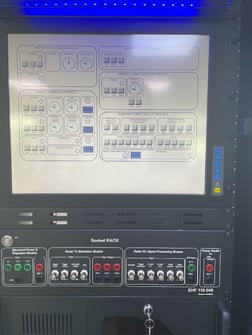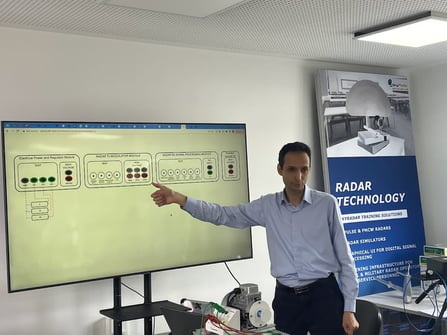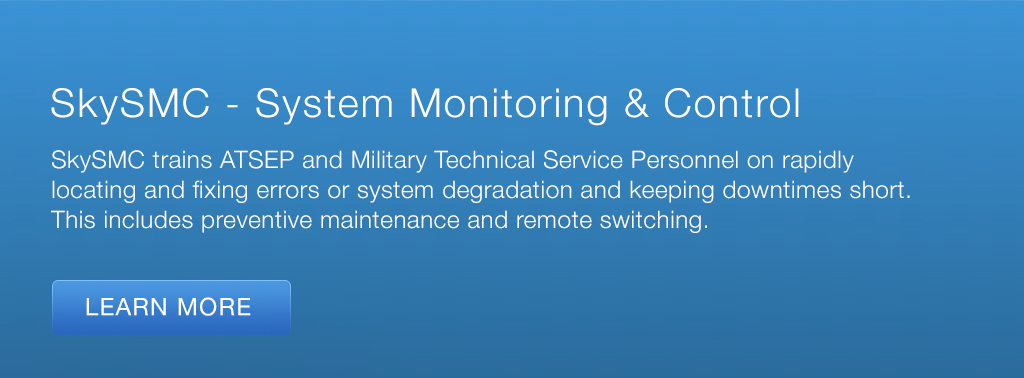ATC ensures safe aircraft movement. Power source errors from lightning-related incidents impact ATC systems. Learn about their definition, impact, and mitigation
Air Traffic Control (ATC) is a critical component of the aviation industry, responsible for ensuring the safe and efficient movement of aircraft. The uninterrupted and reliable supply of power to ATC systems is essential for their operation. Power source errors due to lightning-related errors in electrical cabinets can have a severe impact on the performance of ATC systems. This article discusses the definition of power source errors due to electrical cabinet-related errors, lightning-related errors, and their impact on ATC services. Additionally, it provides some scenarios that illustrate the impact of transmission errors related to lightning- and outlines the steps that ATSEP (Air Traffic Safety Electronics Personnel) should take to rectify and prevent power source errors related to lightning-related errors.
Definition of Lightning Related Power Source Errors
Power source errors due to lightning refer to disruptions or failures in the power supply caused by the effects of lightning strikes. Lightning, a natural phenomenon that occurs during thunderstorms, carries a significant amount of electrical energy. When a lightning strike occurs near power infrastructure, such as power substations or transmission lines, it can cause power surges, voltage fluctuations, or even damage to electrical components.
These power source errors can manifest in various ways, including temporary power outages, voltage spikes or drops, electrical surges, or equipment damage. Lightning-related power source errors can impact critical systems and infrastructure, including air traffic control centers, causing disruptions to communication, surveillance, and overall operational capabilities.
It is crucial to protect power systems and implement appropriate measures, such as surge protection devices and backup power sources, to minimize the risk and mitigate the impact of power source errors due to lightning-related errors
What is Lightning Related Errors?
Lightning-related errors refer to issues caused by lightning strikes that can occur in ATC systems. Lightning is a natural phenomenon that occurs during thunderstorms. When lightning strikes, it produces an electromagnetic pulse (EMP) that can disrupt the operation of electronic systems, including ATC systems. Lightning strikes can cause equipment failures, data corruption, or even system crashes.
Scenario Illustrating Impact of Lighting Related Power Source Errors on Air Traffic Control Services
Scenario 1: Communication Disruption
Imagine a busy air traffic control center managing multiple aircraft in its airspace. Suddenly, a powerful lightning strike occurs nearby, causing a power source error. The lightning strike disrupts the main power supply to the control center, leading to a complete power outage. As a result, all communication systems, including radios, data links, and telephone lines, go offline.
In this scenario, air traffic controllers lose their ability to communicate with pilots. They cannot issue important instructions, provide updates on weather conditions or runway changes, or respond to pilot queries. Pilots, on the other hand, are unable to report emergencies, seek guidance, or receive critical information from controllers. This breakdown in communication compromises the safety and efficiency of air traffic control services, increasing the risk of miscommunication, delays, and potential safety incidents.
Scenario 2: Radar and Surveillance Loss
Consider an air traffic control center heavily reliant on radar and surveillance systems to monitor and track aircraft movements. A powerful lightning strike hits a nearby radar installation, causing a power source error. The radar system experiences a temporary disruption, leading to a loss of real-time radar data.
In this scenario, air traffic controllers lose their ability to accurately track aircraft positions, altitudes, and speeds. They rely on limited secondary surveillance information, such as transponder data, which may not provide comprehensive situational awareness. Controllers face challenges in managing aircraft separations, detecting potential conflicts, and ensuring safe and efficient operations. The loss of radar and surveillance capabilities compromises the controller's ability to make informed decisions, potentially leading to increased workload, reduced airspace capacity, and heightened safety risks.
These scenarios illustrate the impact of power source errors related to lightning on air traffic control services. Communication disruptions and loss of radar and surveillance capabilities can significantly hamper the ability of air traffic controllers to ensure safe and efficient aircraft operations. It emphasizes the importance of implementing measures to protect power infrastructure, establish redundant systems, and have contingency plans in place to mitigate the effects of power source errors caused by lightning-related incidents.
Impact of Lightning Related Power Source Errors on Air Traffic Control Service
Power source errors related to lightning-related errors can have a significant impact on air traffic control services. Here are some of the potential impacts
Communication Disruptions
Lightning-related power source errors can disrupt communication systems used by air traffic controllers to communicate with pilots. This can result in interrupted or unreliable communication, making it difficult to relay important instructions, receive updates, or coordinate aircraft movements. Communication breakdowns can lead to confusion, delays, and potential safety risks.
Loss of Radar and Surveillance
Lightning strikes can cause power disruptions to radar and surveillance systems used for monitoring and tracking aircraft. This can result in a loss of real-time information about aircraft positions, altitudes, and speeds. Without accurate surveillance data, air traffic controllers may struggle to effectively manage aircraft separation, detect potential conflicts, or monitor airspace congestion.
Reduced Situational Awareness
Power source errors due to lightning can compromise the situational awareness of air traffic controllers. Without access to real-time radar data, controllers may have limited information about the current status of aircraft in their airspace. This can hinder their ability to make informed decisions, respond to changing conditions, and ensure safe and efficient aircraft operations.
Operational Disruptions
Power source errors can lead to interruptions or even complete shutdowns of critical systems within air traffic control centers. This can result in operational disruptions, including delays in flight departures or arrivals, reduced airspace capacity, and increased workload for controllers. Operational inefficiencies can ripple through the air traffic management system, impacting neighboring sectors and airports.
Safety Risks
The impact of power source errors related to lightning on air traffic control services can introduce safety risks. Limited communication, compromised surveillance, and reduced situational awareness increase the potential for errors, such as loss of separation between aircraft or runway incursions. These safety risks can jeopardize the well-being of passengers and aircraft operating in the affected airspace.
To mitigate the impact of power source errors related to lightning on air traffic control services, it is important to implement measures such as lightning protection systems, redundant power sources, backup communication systems, and comprehensive emergency response procedures. Regular maintenance, inspections, and testing of power infrastructure can also help identify and address potential vulnerabilities. By implementing these measures, the reliability and resilience of air traffic control services can be enhanced, minimizing the impact of power source errors caused by lightning-related incidents.
The following are the steps that ATSEP should take to rectify Lightning related Power Source Errors:
Identify the source of the problem
ATSEP should investigate the cause of the power source error and determine if it is due to a lightning strike or some other factor. This will help them develop an appropriate plan for restoring power to the ATC systems.
Assess the extent of the damage
ATSEP should determine the extent of the damage caused by the lightning strike. They should check if any equipment has been damaged beyond repair and if any data has been lost or corrupted.
Isolate the problem
ATSEP should isolate the affected equipment from the power source to prevent further damage. They should also ensure that other equipment connected to the same power source is not affected.
Replace damaged equipment
If any equipment has been damaged beyond repair, ATSEP should replace it with new equipment. This will ensure that the ATC systems are operational as soon as possible.
Test the equipment
ATSEP should test the repaired or replaced equipment to ensure that it is functioning correctly. They should also check the communication channels to verify that the ATC systems are communicating with the aircraft correctly.
Restore power to the ATC systems
Once the equipment has been repaired or replaced and tested, ATSEP should restore power to the ATC systems. They should monitor the systems for any issues to ensure that they are fully operational.
Steps to be Followed by ATSEP for Lightning Related Power Source Errors
ATSEP can take the following steps to prevent lightning-related errors in ATC systems
Install lightning protection
ATSEP should install lightning protection systems, such as surge protectors, lightning rods, and grounding systems, to protect the ATC systems from lightning strikes.
Perform regular maintenance
ATSEP should perform regular maintenance on the ATC systems and electrical cabinets to ensure that they are functioning correctly. Regular maintenance can help identify and fix any issues before they cause significant problems.
Conduct risk assessments
ATSEP should conduct risk assessments to identify areas that are at higher risk of lightning strikes. They should then take appropriate measures to protect the equipment in these areas.
Implement backup power systems
ATSEP should implement backup power systems, such as uninterruptible power supplies (UPS), to ensure that the ATC systems remain operational during a power outage caused by lightning-related errors.
Factors Responsible for Lightning Related Power Source Errors
The following factors are responsible for lightning-related errors related to power source errors
Location
The location of the ATC systems plays a significant role in determining the likelihood of lightning-related errors. Areas with a higher incidence of thunderstorms are at higher risk of lightning strikes.
Age of the equipment
Older equipment is more vulnerable to lightning-related errors than newer equipment. As equipment ages, it becomes more susceptible to damage from power surges and electrical noise.
Electrical wiring
Poorly installed or maintained electrical wiring can cause power surges and electrical noise, increasing the risk of lightning-related errors.
Design of the equipment
The design of the ATC systems can also affect their susceptibility to lightning-related errors. Equipment with inadequate grounding or insufficient surge protection is more vulnerable to damage from lightning strikes.
Common Types of Power Source Errors Caused by Lightning
The following are some common types of power source errors caused by lightning-related errors
Power surges
Power surges occur when the voltage in the electrical system increases above its normal level. Lightning strikes can cause power surges, which can damage equipment and cause data loss or corruption.
Electrical noise
Electrical noise refers to random fluctuations in the electrical signal, which can cause errors in the ATC systems' operation. Lightning strikes can cause electrical noise in the electrical system, which can disrupt the communication channels between the ATC systems and the aircraft.
Grounding problems
Grounding problems occur when the electrical system is not adequately grounded, causing an imbalance in the electrical charge. Lightning strikes can cause grounding problems, which can damage equipment and cause power outages.
Impact of Lightning Related Power Source Errors on ATC
Lightning-related errors can have a significant impact on ATC systems and air travel. These errors can cause power outages, equipment damage, data loss or corruption, and communication disruptions between the ATC systems and the aircraft. In turn, these issues can lead to flight delays, cancellations, and safety concerns.
In addition, lightning-related errors can also result in significant financial losses for airlines and airports. For example, the closure of the Chicago Midway International Airport in 2020 due to a lightning strike resulted in the cancellation of more than 900 flights, affecting thousands of passengers and causing significant financial losses for the airport and airlines.
How to Prevent Lightning Related Errors
To prevent lightning-related errors, ATSEP should take appropriate measures to protect the ATC systems from lightning strikes and power surges. The following are some steps that ATSEP can take to prevent errors due to lightning-related errors
Install lightning protection systems
ATSEP should install lightning protection systems, such as surge protectors, lightning rods, and grounding systems, to protect the ATC systems from lightning strikes.
Conduct regular maintenance
ATSEP should conduct regular maintenance on the ATC systems and electrical cabinets to ensure that they are functioning correctly. Regular maintenance can help identify and fix any issues before they cause significant problems.
Conduct risk assessments
ATSEP should conduct risk assessments to identify areas that are at higher risk of lightning strikes. They should then take appropriate measures to protect the equipment in these areas.
Implement backup power systems
ATSEP should implement backup power systems, such as uninterruptible power supplies (UPS), to ensure that the ATC systems remain operational during a power outage caused by lightning-related errors.
Conclusion
In conclusion, power source errors due to lightning-related incidents pose significant risks to the reliable operation of Air Traffic Control (ATC) systems. These errors can lead to communication disruptions, loss of radar and surveillance capabilities, reduced situational awareness, operational disruptions, and safety risks. The impact of lightning-related power source errors on ATC services can result in flight delays, cancellations, compromised safety, and financial losses for airlines and airports.
To mitigate the effects of lightning-related power source errors, it is crucial for ATSEP and other stakeholders in the aviation industry to implement preventive measures. This includes installing lightning protection systems, conducting regular maintenance, performing risk assessments, and implementing backup power systems. By taking these proactive steps, the reliability and resilience of ATC systems can be enhanced, minimizing the impact of power source errors caused by lightning-related incidents.
Furthermore, collaboration and coordination among ATSEP, aviation authorities, and other relevant entities are essential to ensure the continued safety and efficiency of air traffic control services. Ongoing monitoring, assessment, and improvement of power infrastructure, along with the implementation of comprehensive emergency response procedures, are crucial in preventing and addressing lightning-related power source errors effectively.
By prioritizing the protection of power systems and implementing robust preventive measures, the aviation industry can safeguard the integrity and functionality of ATC systems, ensuring the safe and efficient movement of aircraft even in the face of lightning-related challenges.
SkyRadar's System Monitoring & Control Solution
SkySMC - SkyRadar’s System Monitoring and Control Suite is a pedagogically enhanced, fully operational monitoring & control tool. It has been designed to practice these use cases. We have optimized it to host ATSEP training in SUR, NAV, COM, DPR and SMC compliant to EASA's Easy Access Rules for ATM-ANS (Regulation (EU) 2017/373) and ICAO Doc 10057.
SkyRadar provides SkySMC as a complete laboratory in a turn-key approach, or as a virtual infrastructure (for purchase or as a service).
SkySMC is not a simulator, but a fully operational open monitoring system. It comes by default with a server including various virtualized applications and virtualized servers, but also connects to simulated systems. In addition, there are various hardware extensions available including training infrastructures, monitorable training radars, or even complete ATM systems, all connected to the System Monitoring & Control solution. Most components such as the radars, it IT infrastructure or networks exist in hardware and software (virtualized or simulated).
The two photos above show the same trouble-shooting panel and socket rack in real hardware and in the simulator (fully functioning).
SkyRadar's System Monitoring & Control training system can be easily blended into distance learning solutions and existing learning management systems.
Let's talk
Stay tuned to be always the first to learn about new use cases and training solutions in ATSEP qualification (real radars or simulators).
Or simply talk to us to discuss your training solution.
References
-
https://www.faa.gov/documentLibrary/media/Advisory_Circular/150_5220_26C_Chg1_AC_Lightning_Protection_Airport_Systems.pdf
-
International Civil Aviation Organization. (2019). Manual on the prevention of damage caused by lightning to civil aircraft. Retrieved from https://www.icao.int/safety/MID/Documents/LightningManual2019.pdf
-
Li, Q., Li, Y., Li, D., Wang, H., & Chen, X. (2018). Lightning impact on air traffic control system operation. In 2018 IEEE International Conference on Applied Superconductivity and Electromagnetic Devices (ASEMD) (pp. 100-103). IEEE.
-
Zuffada, C., Farina, A., & Gandino, E. (2016). Lightning protection of air traffic control systems. IEEE Transactions on Electromagnetic Compatibility, 58(6), 1676-1683.






